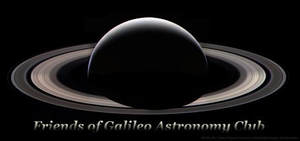FOG Blog
|
Evening Sky
Mars (magnitude 1.5) is visible high in the western sky as darkness falls. The red planet currently sets around 1:00am and about 30 minutes earlier by mid-May. The moon passes 1.5° north of (above) Mars on the evening of May 15. Venus (magnitude -3.9) has returned to the evening sky and now appears low in the south-southwest just after sunset. It continues to get slightly higher above the horizon each evening. A crescent moon appears less than 1° south of Venus the evening of May 12. Mercury (magnitude -1.3) returns to the evening sky toward the end of April. It appears low in the south-southwest just after sunset, a few degrees higher above the horizon than Venus. Like Venus, the innermost planet appears higher above the horizon each evening, but it also becomes dimmer, reaching magnitude 0.3 by mid-May. The Pleiades star cluster (M45) appears about 5° from Mercury on May 2, 3, and 4. The moon passes less than 3° south of Mercury on May 13. Morning Sky Jupiter (magnitude -2.2) and Saturn (0.7) are visible in the early morning southeastern sky. Saturn rises first, currently just before 3:30am, with Jupiter following about 30 minutes later. Both planets remain visible until fading into the morning sunlight. The moon passes about 4° south of Saturn the morning of May 3, and about 5° south of Jupiter the next morning. Meteor Showers The Lyrids meteor shower is active from April 16 to April 30, peaking the night of April 21-22, with an expected rate of 18 meteors per hour at the peak when the moon is about 70% illuminated. The shower produces its highest rates over three nights centered on the peak. The Lyrids are so named because the meteors appear to radiate from a point in the constellation Lyra in the eastern sky. The Eta Aquariids meteor shower is active from April 19 to May 28, peaking the night of May 4-5. Best viewing is from the southern tropics, but even in the northern hemisphere the shower produces 10-30 meteors per hour at the peak just before dawn. The moon, about 40% illuminated, rises just before 4:00am on May 5. Activity is good for about a week centered on the peak. The Eta Aquariids are so named because the meteors appear to radiate from a point in the constellation Aquarius in the eastern sky. Total Lunar Eclipse A total lunar eclipse occurs in the early morning hours of May 26. The partial phase begins at 1:47am and ends at 5:52am. Totality is less than 15 minutes, lasting from 4:11am to 4:25am. More on this in next month’s sky report. Moon Phases Full (4/26), last (5/3), new (5/11), first (5/19), full (5/26)
0 Comments
Click the link below to view or download this month's newsletter.re to edit.
|
Friends of Galileo
We are astronomy enthusiasts who love to learn and to share our wonder at the amazing sights right overhead. Archives
February 2024
Categories
All
|
||||||

 RSS Feed
RSS Feed